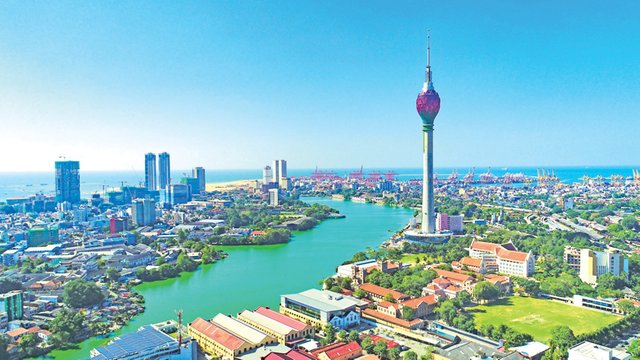Economy of Sri Lanka

The free-market economy of Sri Lanka was worth $84 billion by nominal gross domestic product (GDP) in 2019and $296.959 billion by purchasing power parity (PPP). The country had experienced an annual growth of 6.4 percent from 2003 to 2012, well above its regional peers. This growth was driven by the growth of non-tradable sectors, which the World Bank warned to be both unsustainable and unequitable. Growth has slowed since then. In 2019 with an income per capita of 13,620 PPP Dollar or 3,852 (2019) nominal US dollars, Sri Lanka was re-classified as a lower middle income nation by the World Bank from a previous upper middle income status.
Sri Lanka has met the Millennium Development Goal (MDG) target of halving extreme poverty and is on track to meet most of the other MDGs, outperforming other South Asian countries. Sri Lanka's poverty headcount index was 4.1% by 2016. Since the end of the three-decade-long Sri Lankan Civil War, Sri Lanka has begun focusing on long-term strategic and structural development challenges. It strives to transition to an upper middle-income country. Sri Lanka also faces challenges in social inclusion, governance and sustainability
.
Services accounted for 58.2% of Sri Lanka's economy in 2019 up from 54.6% in 2010, industry 27.4% up from 26.4% a decade earlier and agriculture 7.4% Though there is a competitive export agricultural sector, technological advances have been slow to enter the protected domestic sector. Sri Lanka is the largest solid and industrial tyres manufacturing centre in the world and has an apparel sector which is moving up the value chain. But rising trade protection over the past decade has also caused concern over the resurgence of inward looking policies.
In services, ports and airports are helping the country's newfound status as a shipping and aviation hub.Port of Colombo is the largest transshipment hub in South Asia. There is a growing software and information technology sector, which is competitive and is open to global competition. Tourism is a fast expanding area. Lonely Planet named Sri Lanka the best destination to visit in 2019 and Travel+Leisure the best island.Sri Lanka's top export destinations are the United States, United Kingdom and India. China, India and the UAE are the main import partners.
With the onset of the COVID-19 pandemic, lingering concerns over Sri Lanka's slowing growth, money printing and government debt has spilled over into a series of sovereign rating downgrades. Import controls and import substitution have intensified after heightened monetary instability coming from debt monetization.
Sri Lanka has been named among the top 10 countries in the world in its handling of the COVID-19 pandemic.
https://www.socialpilot.co?fp_ref=kasun26
https://bit.ly/3imFxUV